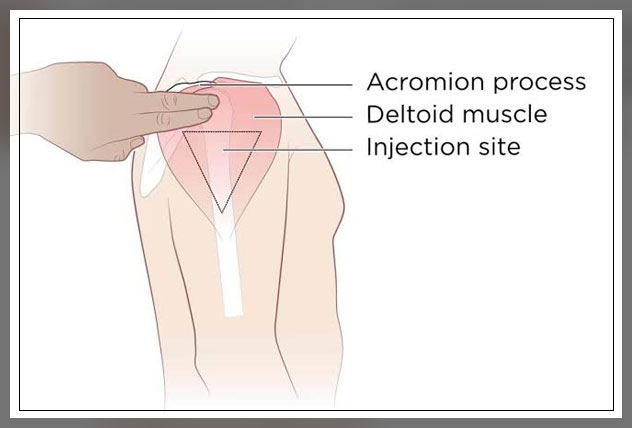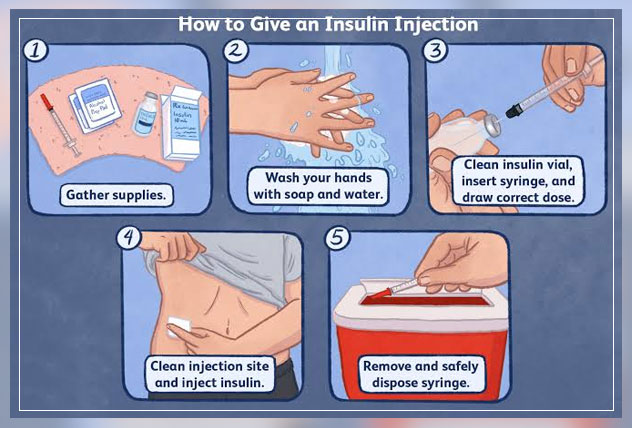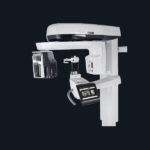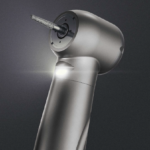
There are different types of injections a medical health care professional can give to the patient.
Injections are also known as shots and help to deliver or administer medications, fluids, or other nutrients directly into the body of the patient.
Moreover, a health care professional can use different types of injections for purposes like administering vaccines and other types of injections into the patient’s vein, muscle, skin, or bone.
It is important to note that there are different types of injections that exist, depending on the purpose of the medication or substance in the shot.
furthermore, a healthcare professional can inject a number of medications into different parts of the body.
Most injections consist of a needle and syringe. At the same time, a doctor can also use a newer device, like an auto or jet injector.
Keep on reading to learn more about injection types.
Intravenous Injections
Healthcare professionals use intravenous, IV injections to give medications directly into the vein of the patient.
As the doctor directly injects the medication into the bloodstream, it allows for rapid absorption, according to research.
Moreover, this causes an immediate response according to a literature review.
A medical professional can administer IV medication either as a single dose or as an infusion over a period of many hours.

Also, they can use intravenous injections to:
- administer fluid solutions and electrolytes to a patient experiencing dehydration
- give local and general anesthesia to patients having surgery or a procedure
- administer pain medications to a patient in an emergency room or after surgery
- give blood or blood products to the patient
- provide nutrition to a patient who is severely malnourished
- provide chemotherapy to a patient with cancer
- infuse monoclonal antibodies for COVID-19 treatment
it is important to note that doctors can also use IV to administer iron in patients with iron deficiency, give contrast dye while having an imaging test, administer steroids like dexamethasone, etc.
However, common IV injection sites are areas where veins lie close to the skin of the patient.
These include the back of the hands, the front and back of the lower arm, and the front elbow pit.
Doctors and health care professionals can also use veins in the foot to administer IV injections to infants who are not walking yet, according to the 2016 practice standards of the Infusion Nurses Society.
Intramuscular Injections
Doctors can use intramuscular injections to deliver medication into the muscle tissue of the patient.
The muscles have a rich blood supply, which helps the body to absorb the medication quickly.
Common uses of intramuscular injections are:
- administer most vaccines, per to the Centers for Disease Control and Prevention, CDC
- administering select antibiotics like penicillin and streptomycin
- giving corticosteroids for inflammation or allergic reactions
- give hormones like testosterone and medroxyprogesterone
- infuse drugs to patients who cannot take medications through other commonly used routes

Moreover, patients with certain conditions like multiple sclerosis may need to give themselves this type of injection at home.
The recommended intramuscular injection sites are the upper outer thigh area muscle, the shoulder muscle and upper arm, and the hip.
Additionally, doctors administer intramuscular injections to avoid injecting into the buttock area of the patient to prevent damage to the sciatic nerve, according to a review.
Subcutaneous Injections
Healthcare professionals will administer subcutaneous injections into the deep into the fatty tissue just below the skin and above the muscle tissue of the patient.
They will use a smaller needle to give a subcutaneous injection to make sure that the medication enters the fatty tissue and not the muscle.
Unlike muscle tissues, subcutaneous tissue has a few blood vessels, according to a study.
Moreover, the presence of fewer blood cells allows the body to absorb the medication slowly over a period of time.
Subcutaneous injections are less painful and less likely to have an adverse reaction like an infection.

Common uses of subcutaneous injections may include the administration of:
- insulin for diabetes
- heparin, or blood thinner
- the measles, MMR, and chickenpox varicella vaccines
- palliative care pain medications like fentanyl and morphine
- other home administered drugs like Dupixent, and fertility medication
Patients with a blood clotting disorder should receive vaccines through subcutaneous injections.
Furthermore, common subcutaneous injection sites are the outer side or back of the upper arm, the front and outer side of the upper thigh, and the belly area.
Intraosseous Injections
Intraosseous injections use a special needle to puncture the bone marrow to reach the veins.
The bone marrow has a rich supply that connects straight to the circulatory system of the human body.
Moreover, healthcare professionals reserve intraosseous injections for emergencies, when intravenous access proves difficult or impossible, according to a review.
Also, healthcare professionals use these types of injections as the quickest way to give fluids, drugs, and blood products to patients in a number of emergencies.
These can include:
- severe injuries from an accident or fall
- electrocution
- a medication overdose
- childbirth complications
- respiratory distress
- prolonged or back-to-back seizures
- accidental poisoning
- stroke
- cardiac arrest
A healthcare professional can also administer these types of injections to a patient in septic shock, local anesthesia delivery for those undergoing complex dental procedures like a root canal, and dispense pain medication to terminally ill patients.
While common intraosseous injection sites include the lower leg bone, thigh bone, and upper arm bone.
It is important to note that intraosseous injections present an effective route for emergency vein access in all age groups.
Intradermal Injections
Healthcare professionals can give intradermal injections just below the surface of the skin, thus, creating a small bump or a bleb or wheal.
The intradermal injection route has the longest absorption time of all the different types of injections, according to the guide to Clinical Procedurespublished in 2015.
Common uses of intradermal injections can be:
- allergy testing
- tuberculosis, TB screening
- administration of influenza vaccine Fluzone ID.

Moreover, healthcare professionals mostly use body parts of the patient will little as hair as intradermal injection sites.
These often include the inner surface of the forearm, and the upper back, under the scapula.
Additionally, the skin injection site should not have sores, rashes, moles, or scars.
Possible Side Effects and Risks
Any injection or vaccine can cause side effects/
For the most part, these are minor, such as a sore arm or a low-grade fever. While minor effects tend to go away within a few days, according to CDC.
However, less common adverse effects and risks come with all types of injections.
These can include:
- persistent or severe pain at the injection site
- redness, swelling, warmth, or signs of infection
- an abscess or collection of pus at the injection site
- damage to underlying tissues
- injury to adjacent tissues
- bone injury or infection
- excessive bleeding, especially in patients with bleeding disorders
- formation of a large blood clot at the injection site
- an allergic reaction
- nausea, vomiting, or dizziness
- fainting
Transmission of an infectious disease like hepatitis C can also occur if the patient comes into contact with the blood of another person who has the virus.
In order to prevent injection complications, the CDC has a summary page for healthcare professionals regarding the safe use of needles, syringes, and injectable, medications in patient care settings.
Administering the Injection Safely
Safe and effective administration of injectable medicines is a skill that healthcare professionals learn and practice.
Learning about the injection sites, techniques, and problems to watch out for is important to help minimize the risk of transmitting bone borne and risk of transmitting blood borne while certain complications.
The steps to administer an injection safely are:
Hand Hygiene
Good hand hygiene and maintaining a clean environment are crucial.
A healthcare professional will use clean or sterile surgical gloves for IM injection or where they will administer the injection.
Moreover, in some cases, they may wear personal protective equipment like aprons and masks.
Medication Preparation
It is important to note that medical professionals will prepare the medication using a no-touch technique and use sterile, single-use equipment.
They will check the form and dosage of all medications and make sure they are in date. Also, they will make sure that the medications are not expired or discolored.

Furthermore, different medications have different storage requirements and preparation techniques, and they follow the instructions carefully.
Skin Preparation
The healthcare professional will clean the skin with a sterile, single-use swab for medical skin cleansing.
Giving the Injection
While giving the patient, the healthcare professional will inform the patient about the dosage and medication, so that they can understand what is happening.
After the Injection
Lastly, the doctor, healthcare professional, or nurse will wash their hands and remove the gloves.
Also, they will dispose of the needle immediately in a designed sharps box.
Injections at Home
In some cases, a patient may need to administer an injection at home.
In such cases, the doctor will make sure to inform the patient about the right way to administer the injection.
Patients who need to take a course of injected blood thinners to breathe blood clots will need subcutaneous injections daily.
While some fertility treatments can also involve injections at home.

Moreover, inulin-dependent diabetic patients may also need to inject themselves.
The amount of insulin injection depends on the condition of the patient, their blood sugar level, or the food they eat that day.
Some patients may find it difficult to inject themselves with varying dosages of insulin.
So they may use administration devices to inject themselves,
Furthermore, some patients may need assistance with injections at home.
Therefore, they can ask experienced nurses or caregivers for help.
Final Thoughts
The patient can use injectable medicines in healthcare and home settings for the prevention, diagnosis, and treatment of different illnesses. Moreover, healthcare professionals can use different types of injections, depending on the purpose, like administering vaccines, and other types of medications into the patient’s vein, muscle, skin, or bone.
Typical injection side effects may include pain, swelling, or redness at the injection side. However, these side effects often go away within a few days. When doctors use the correct technique, and injection site, injection complications especially with vaccines, occur rarely.




